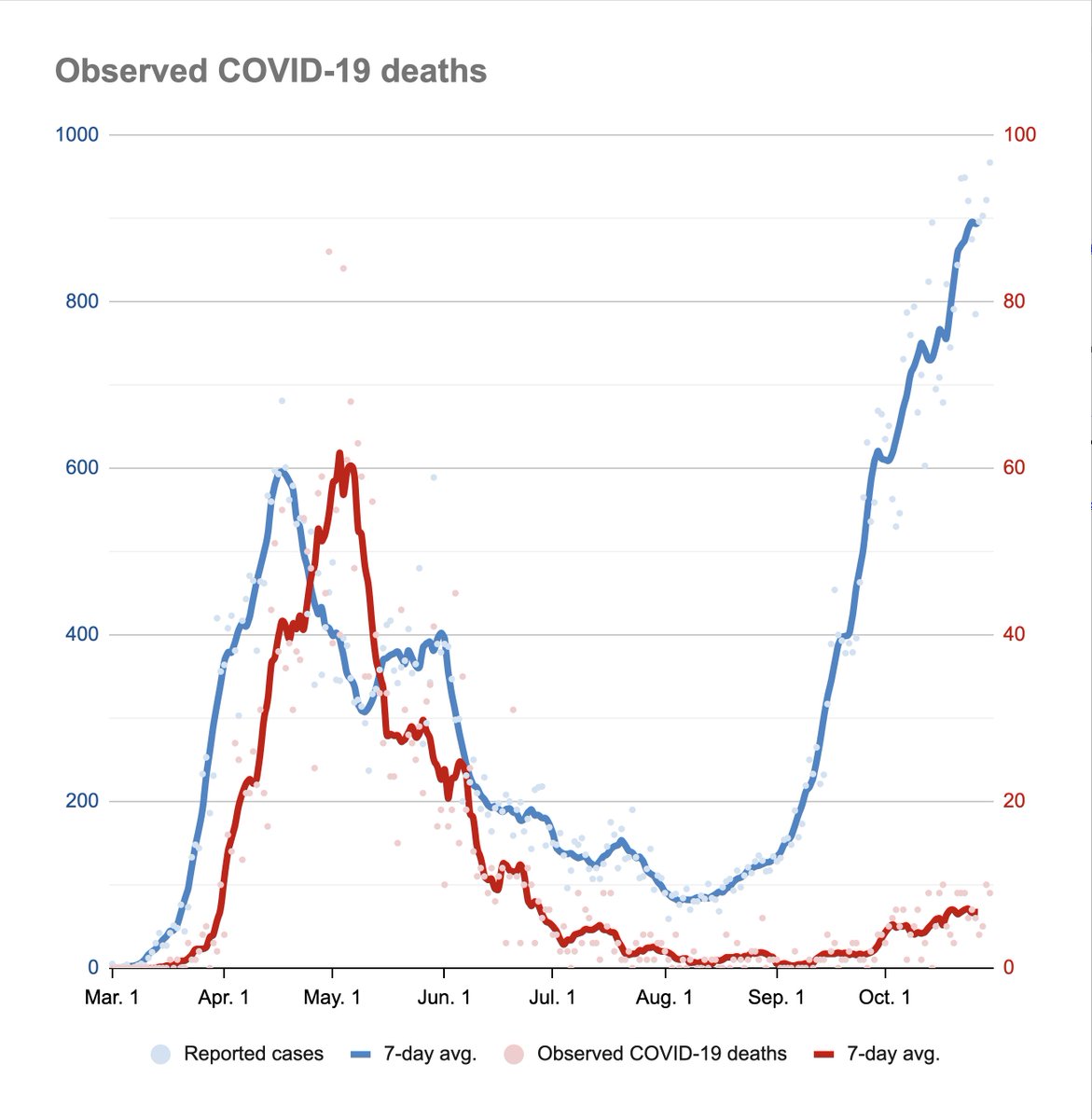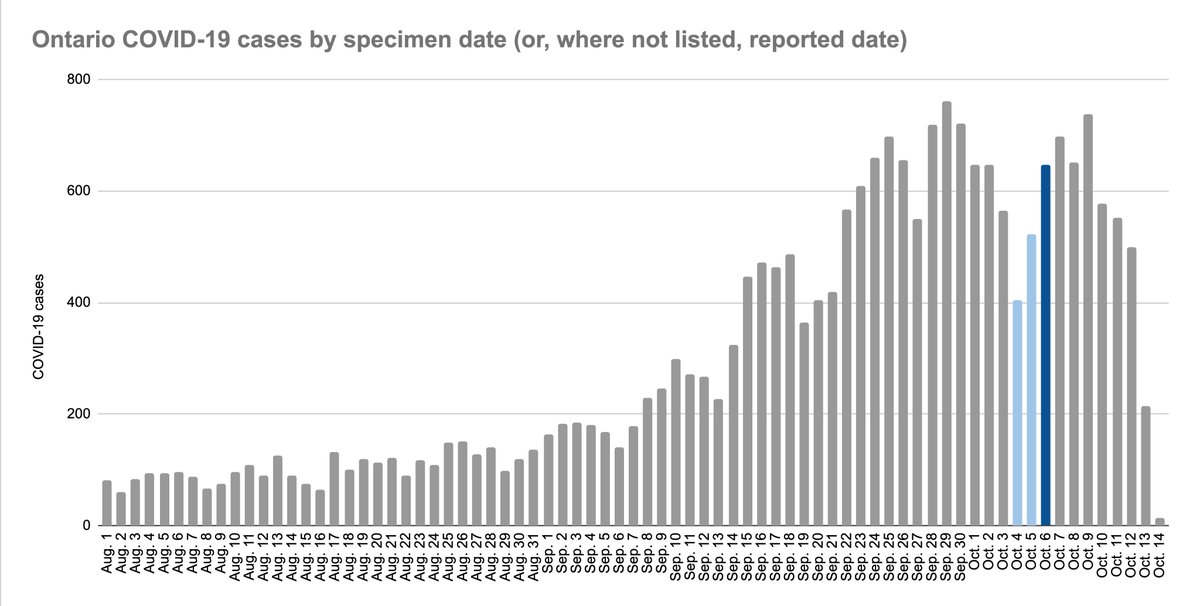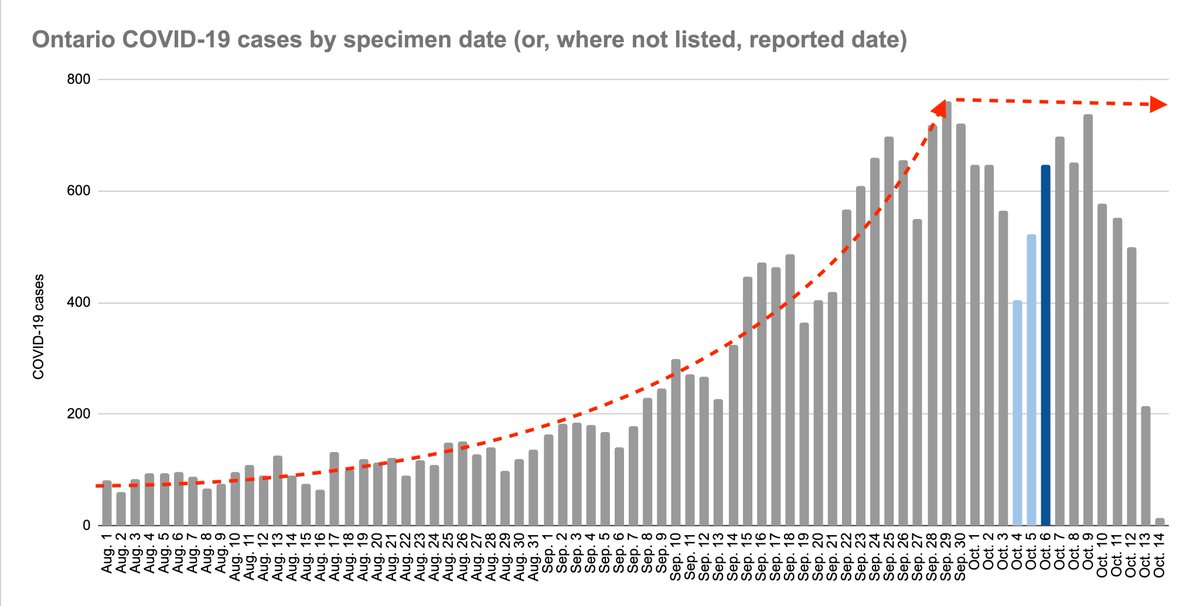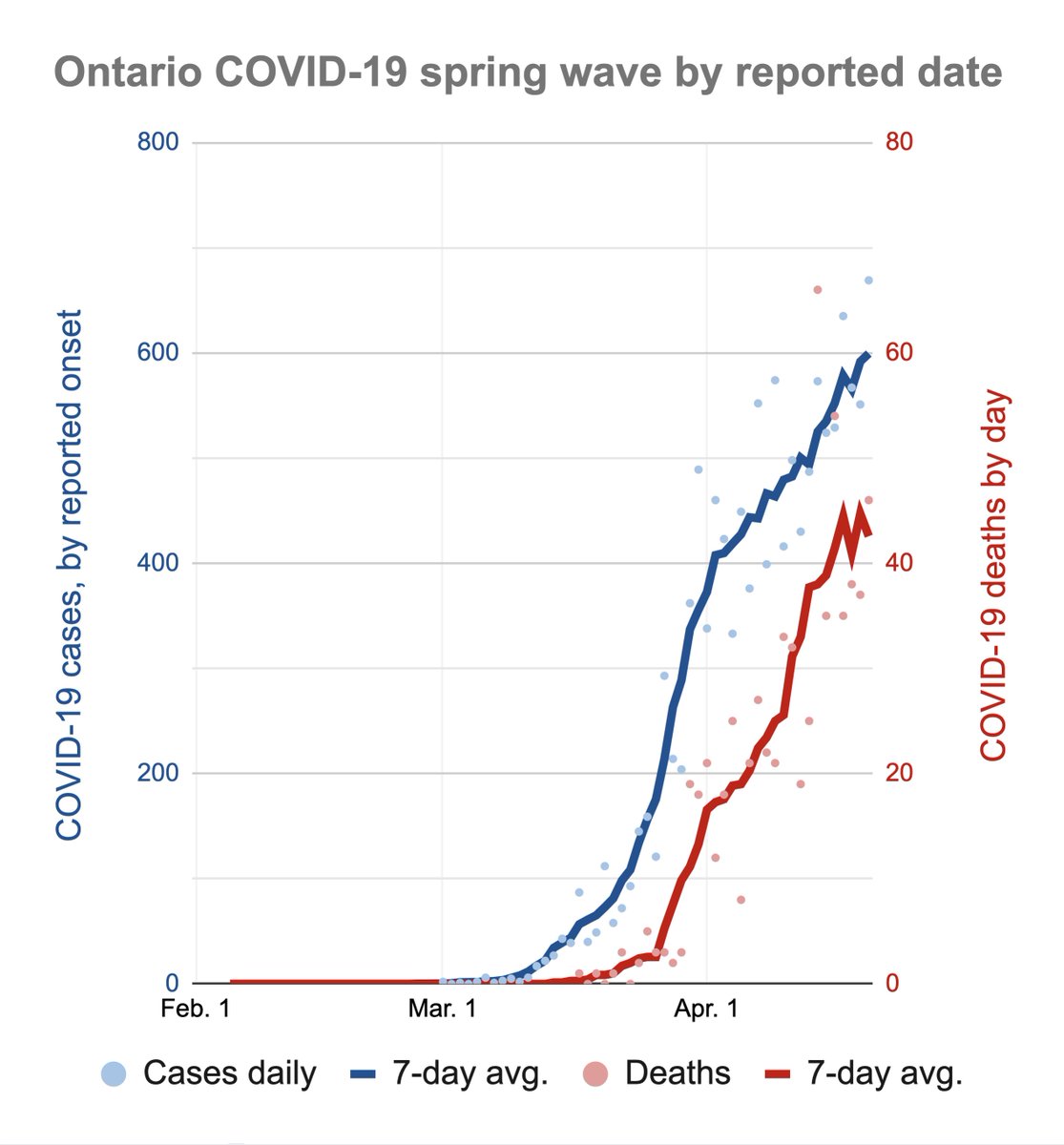
1/n I know I post a count literally every evening — but this is worth saying:
You get the most accurate sense of the pandemic by focusing less on the bumps in this line and instead squinting at the general shape of it.
The picture won't be precise — but the data isn't either.
You get the most accurate sense of the pandemic by focusing less on the bumps in this line and instead squinting at the general shape of it.
The picture won't be precise — but the data isn't either.
https://twitter.com/EdTubb/status/1336802068493971471
2/n The problem is that all the ups and downs in these lines strongly suggest *narrative* — but for the most part, the data doesn't have anywhere near that fidelity.
Big turnarounds happen in pandemics, yes, but you won't know for sure you've had one until weeks later.
Big turnarounds happen in pandemics, yes, but you won't know for sure you've had one until weeks later.
3/n Think of all the times we've heard about flattening, or a plateau, or a spike after some holiday.
You can see those moments clearly in the ups and downs of the fall wave.
At the same time: You can also draw a remarkably straight line through the same curve.
You can see those moments clearly in the ups and downs of the fall wave.
At the same time: You can also draw a remarkably straight line through the same curve.
4/n It's not that that week by week data didn't matter, it's that the trend — broadly speaking — hadn't actually changed.
5/n Anyway, I'm saying all this because I'm *tempted* to think things have slowed a touch lately in Ontario, and yet when I squint at it, that's a very straight line upward since Sept., isn't it?
6/n I've shared this chart before, but it basically sums it up.
This is the same Ontario case curve, just smoothed over 14 days rather than 7.
How many times has this curve truly changed direction?
This is the same Ontario case curve, just smoothed over 14 days rather than 7.
How many times has this curve truly changed direction?
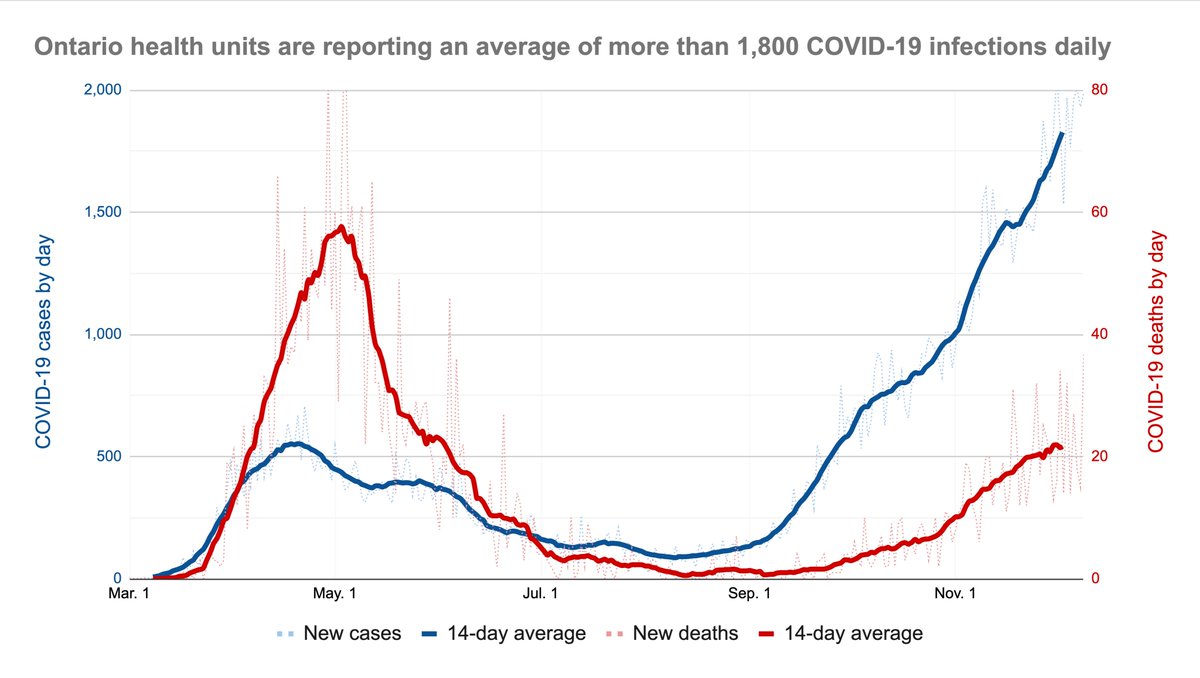
7/n To be 100% clear: A straight line chart of an inherently exponential phenomenon like an infectious disease does, in fact, show a gradual slowdown.
Steady exponential growth would curve upward.
What it doesn't show is any sudden turnaround.
Steady exponential growth would curve upward.
What it doesn't show is any sudden turnaround.
• • •
Missing some Tweet in this thread? You can try to
force a refresh


